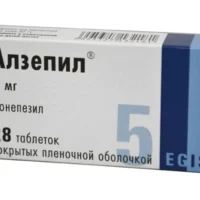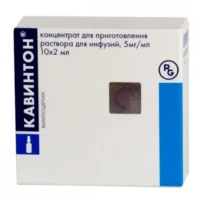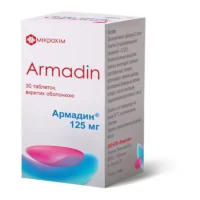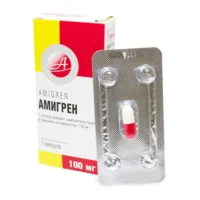Description
Lamotrin-50 Tablets 50 mg. №30
Ingredients:
Each tablet contains 50 mg of Lamotrigine.
Mechanism of Action:
Lamotrigine, the active ingredient in Lamotrin-50 tablets, is an antiepileptic drug that modulates voltage-gated sodium channels, thereby stabilizing neuronal membranes and inhibiting the release of excitatory neurotransmitters, thus reducing abnormal electrical activity in the brain.
Pharmacological Properties:
Lamotrigine exhibits anticonvulsant properties by prolonging the inactivated state of voltage-gated sodium channels, inhibiting glutamate release, and modulating calcium channels. It is well-absorbed orally and has a half-life of approximately 24 hours.
Indications for Use:
Lamotrin-50 tablets are indicated for the treatment of epilepsy in adults and children as adjunctive therapy in partial seizures, primary generalized tonic-clonic seizures, and seizures associated with Lennox-Gastaut syndrome.
Contraindications:
Do not use Lamotrin-50 tablets if you have a history of hypersensitivity to Lamotrigine or any other components of the formulation. Use caution in patients with a history of aseptic meningitis associated with Lamotrigine use.
Side Effects:
- Common side effects may include dizziness, headache, nausea, somnolence, and diplopia.
- Serious side effects such as Stevens-Johnson syndrome and toxic epidermal necrolysis have been reported rarely.
Usage Instructions:
The usual starting dose for adults is 25 mg once daily for two weeks, followed by 50 mg once daily for two weeks. The dose may then be increased gradually based on response and tolerability. Lamotrin-50 tablets should be swallowed whole with a glass of water and not crushed or chewed.
Benefits Compared to Analogues:
Lamotrin-50 tablets offer the advantage of once-daily dosing, convenient titration schedules, and a well-established safety profile compared to other antiepileptic drugs. Its broad spectrum of efficacy across different seizure types makes it a versatile option in epilepsy management.
Suitable Patient Groups:
Lamotrin-50 tablets are suitable for use in both pediatric and geriatric populations, with dosing adjustments based on age, renal function, and concomitant medications. Close monitoring is recommended in elderly patients due to potential age-related changes in drug metabolism.
Storage Conditions and Shelf Life:
Store Lamotrin-50 tablets at controlled room temperature away from moisture and heat. Do not freeze. The shelf life of the product is typically 24 months from the date of manufacture.
Packaging Description:
Lamotrin-50 tablets are supplied in blister packs of 30 tablets each, with clear labeling indicating the strength and quantity per pack. The packaging is designed to maintain product integrity and protect the tablets from environmental factors.
Clinical Evidence and Proven Effectiveness:
Lamotrigine has been extensively studied in clinical trials for the management of epilepsy. Clinical studies have demonstrated the efficacy of Lamotrigine in reducing seizure frequency and improving seizure control in patients with various seizure types. Additionally, long-term studies have shown sustained efficacy and tolerability of Lamotrigine in both adult and pediatric populations.





